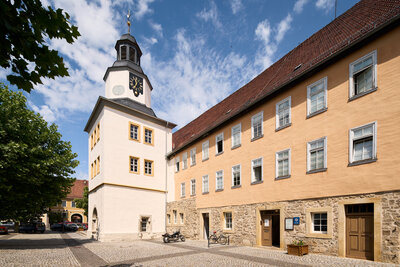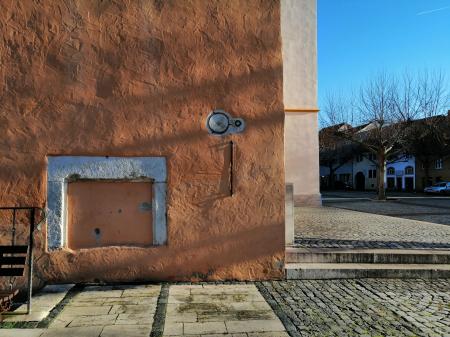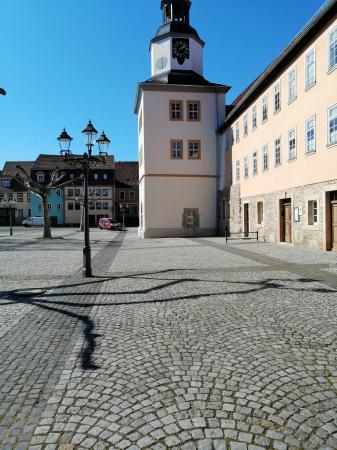Rathaus
-
1377 erbaut
-
1503 erstmalige Zerstörung durch großen Stadtbrand
-
1610 Errichtung des Zeigerturms (Uhrturm) Besonderheit astronomische Uhr
-
1806 Erweiterung des Baues durch großen Verwaltungstrakt
-
1992 Sitz der Verwaltungsgemeinschaft Bad Tennstedt
Das Rathaus ist das zweitälteste weltliche Gebäude unser Stadt. Seine Erbauung wird durch eine im Westgiebel eingelassene kleine Steintafel auf das Jahr 1377 datiert.
Im Jahr 1503 wurde das Haus während des großen Stadtbrandes ein Opfer der Flammen und alle in ihm befindlichen Urkunden des Mittelalters vernichtet. Der Wiederaufbau des Rathauses wurde durch die Bürgerschaft der Stadt sofort nach dem Brand in Angriff genommen und eine Gedächtnistafel angebracht. Diese befindet sich auf der Nordseite des Hauses und zeigt folgende Inschrift:
"Im tausenfünfhundertdritten Jahr, das der Zeit nachfolgt auf das sechste Fest der Margarete ist dieses Werk errichtet worden unter der Zeit des Manuelers und der Bürgerschaft. Dem alles Vermögenden sei Ehre, Lob, immer Gedenken und in Ewigkeit."
Ebenfalls auf der Nordseite des Rathauses ist die Bekrönungsfigur des ehemaligen Marktbrunnens zu sehen. 1685 und 1747 wurde das Rathaus erneut durch Stadtbrände in Mitleidenschaft gezogen. Um 1806 wurde das Haus um einen großen Verwaltungstrakt erweitert, der vom sächsischen Kreisamt zu Tennstedt genutzt wurde. Am Ostgiebel des Rathauses befindet sich ein Renaissancewappen aus Sandstein mit der Tennstedter Tanne als dominierendem Hoheitszeichen der Stadt sowie die Jahreszahlen 1598 und 1806. Beide Zahlen deuten auf Baumaßnahmen am Rathaus hin. Der Westgiebel besitzt neben dem Haupteingang noch zwei kleinere gotische Eingänge. Beide Öffnungen führen in ehemalige Gefängniszellen. Neben den Resten einer sächsischen Elle kann man rechts am Giebel zwei runde Gebilde erkennen. Diese stellen das kleine und das große "Otterloch" dar. "Otterloch" ist die Bezeichnung für eine künstliche Öffnung. Das große Otterloch diente der Bemessung des Wasserabflusses aus dem Klunkerbach, um das Gerberviertel südlich des Osthöfer Tores mit Wasser zu versorgen. Das kleine Otterloch bemaß lange Zeit den Zufluss zum Schlossteich.
Aus Resten der Umfassungsmauer der Tennstedter Burg wurde lt. Chronik im Jahr 1610 der Zeiger- oder Uhrturm errichtet, welcher seit seiner Erbauung eine Uhr besitzt. Das östliche Zifferblatt der Rathausuhr wird durch eine Besonderheit ergänzt, die zusätzlich zur Zeit auch die Mondphasen anzeigt. Wann genau diese Besonderheit eingebaut wurde, ist nicht überliefert. Die Tennstedter Rathausuhr ist jedoch die einzige astronomische Uhr des Unstrut-Hainich-Kreises.
Am oberen südlichen Sockelabschluss befindet sich eine kleine Tafel mit Steinmetzzeichen, bestehend aus den griechischen Buchstaben Alpha und Omega. Auf der Tafel sind ebenso die Tennstedter Tanne, die Jahreszahl 1598 und die Initialen B.S. und C.W. zu sehen. Da auf diesem"Urkundenstein" die Tanne - also das Hoheitszeichen der Stadt - abgebildet ist, kann man davon ausgehen, dass die beiden Initialen auf wichtige Persönlichkeiten des Stadtrates hinweisen. Die Steinmetzzeichen Alpha und Omega stehen für Beginn und Ende der Bauarbeiten. Die Initialen B.S. weisen auf Balthasar Selle hin. Die Initialen C.W. stehen für den Stadtbaumeister Caspar Wüstemann. Ballthasar Selle war zu Beginn und Caspar Wüstemann zum Ende der Bauzeit Bürgermeister der Stadt Tennstedt. Ein neuer "Urkundenstein" schmückt seit 2015 den Turm und trägt die Initialen J.K. Er zeigt an, dass Jörg Klupak in der Zeit der letzten großen Sanierung des Turmes Bürgermeister der Stadt war.
Das Rathaus ist seit dem Jahr 1992 Sitz der Verwaltungsgemeinschaft Bad Tennstedt.
-
built in 1377
-
destroyed by the city fire in 1503
-
Construction of the pointer tower (clock tower) in 1610 with a special feature:
an astronomical clock
-
Extension of the town hall
-
Seat of the administrative community bath Tennstedt since 1992
The Town Hall is the second oldest secular building in our city. Its construction is dated to 1377 by a small stone tablet embedded in the west gable. In 1503, during the great city fire, the house was destroyed in the flames and all documents of the Middle Ages were destroyed. The rebuilding of the town hall was undertaken by the city´s citizenshiip immediately after the fire and a memorial plaque was erected. This is located on the north side of the house and has the following inscription: "In the thousand five hundred and third year following the time of the sixth feast of the Margaret, this work was erected under the age of Manuel and the citizentry. to all wealthy, be honor, praise, always remembering and forever". Also on the north side of the town hall there is the coronation figure of the former market fountain. In 1685 and 1747, the town hall was again affected by city fires. Around 1806 the house was extended by a large administrative wing, which was uses by the Saxon district office to Tennstedt. On the east gable of the town hall there is a Renaissance coat of arms made of sandstone with the Tennstedter fir as a dominant feature as well as the years 1598 and 1806. Both figures indicate construction measures at the town hall. The west gable has next to the main entrance two smaller Gothic entrances. Both openings lead into former prison cells. In addition to the remains of a Saxon Elle can be seen on the right gable two round structures. These represent the small and the large "Otterloch" (otter hole). This is the name for an artificial opening. The large Otterloch was used to measure the runoff from the Klunkerbach to supply the tanner´s quarter south of the Osthöfer gate with water. The small Otterloch has regulated the inflow to the castle pond for a long time. From remains of the enclosure wall of the Tennstedter castle was built according to chronicle in the year 1610 the Seigertower or clock tower, which possesses a clock since its edification. The eastern dial of the city hall clock is complemented by a special feature that displays the moon phases in addition to the time. When exactly this feature was installed, is not known. However, the Tennstedter Rathausuhr (town hall clock) is the only astronomical clock of the Unstrut-Hainich-county. At the upper base of the tower there is a small tablet with stonemason sympols, consisting of the Greek letters Alpha and Omega. Also on the board are the Tennstedt fir, the year 1598 and the initials B. S. and C. W. to see. Since the fir stone - the city´s emplem .- is depicted on this "document stone", one can assume that the two initials refer to important personalities of the city council. The stonemasons Alpha and Omega represent the beginning and end of the construction work. The initials B. S, point to Balthasar Selle, who was mayor of the city at the time of the construction. The initials C. W. stand for Caspar Wüstemann, who was first city master builder and at the end of the construction period also mayor. A new "document stone" decorates the tower since 2015 and bears the initials J. K. They indicate that Jörg Klupak was mayor of the city during the time of the last major renovation of the tower. The City hall has been the seat of the administrative community Bad Tennstedter since 1992.
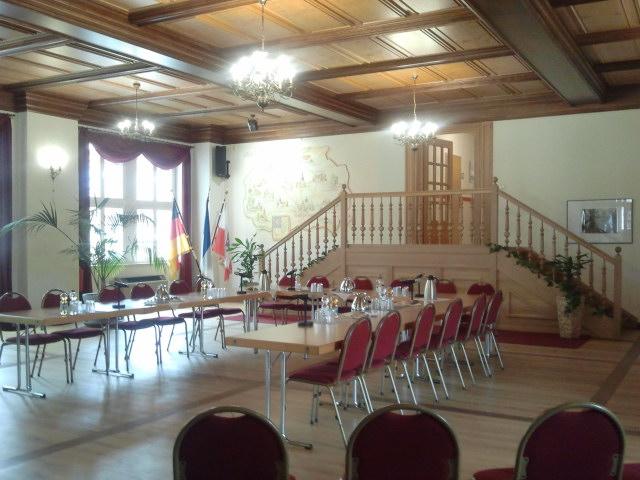
Blick in den Rathaussaal
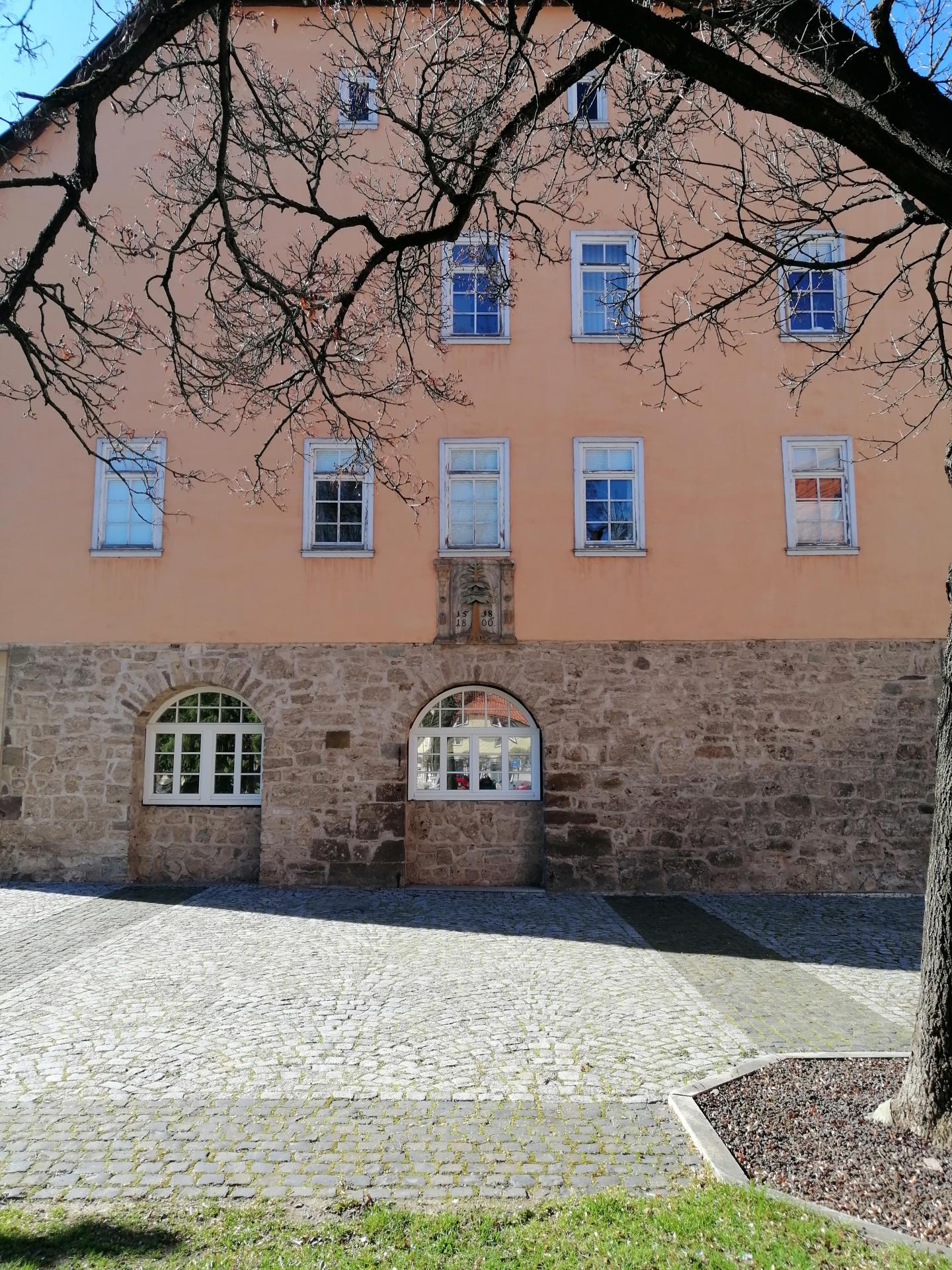
Westgiebel mit dem Tennstedter Hoheitszeichen, der Tanne
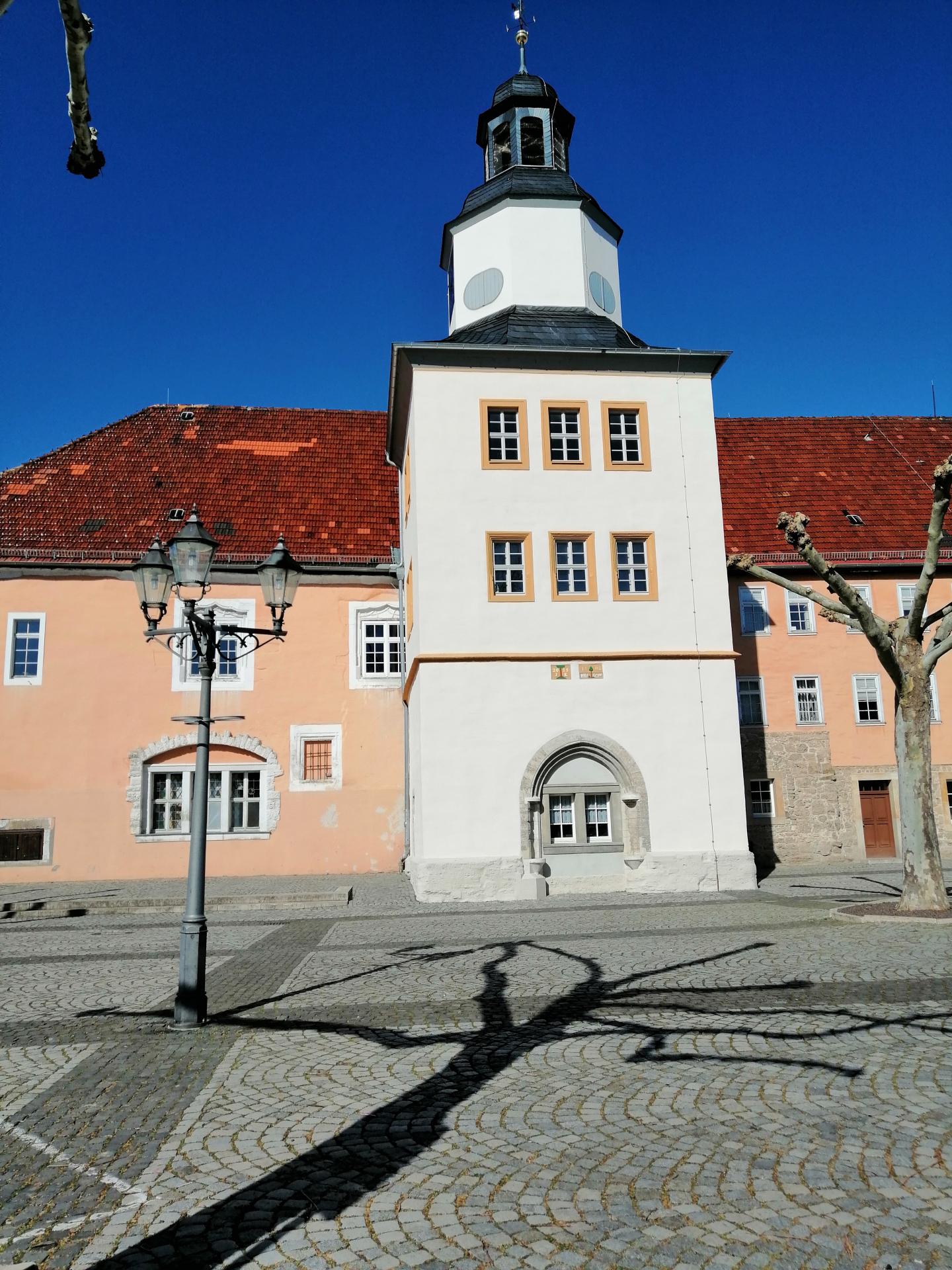
Rathausturm mit Urkundensteinen
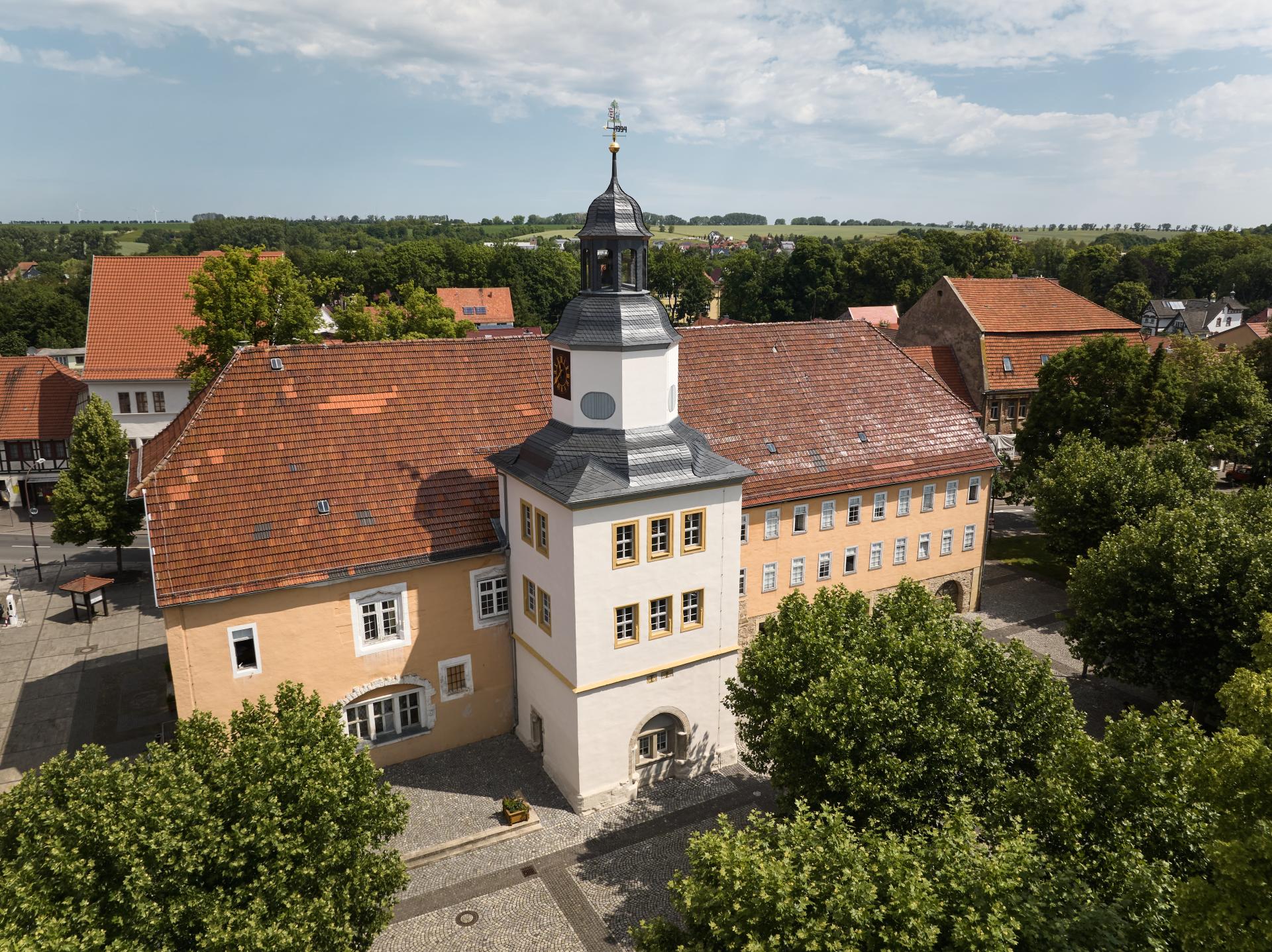
Veranstaltungen
Stadt Bad Tennstedt-Einladung zum Unternehmerstammtisch
Datum: Freitag, 22. November 2024 Uhrzeit: 18:00 Uhr Ort: Rathaussaal, Bad TennstedtLiebe Unternehmerinnen und Unternehmer, ich lade Sie herzlich zum nächsten Unternehmerstammtisch der Stadt Bad ...






